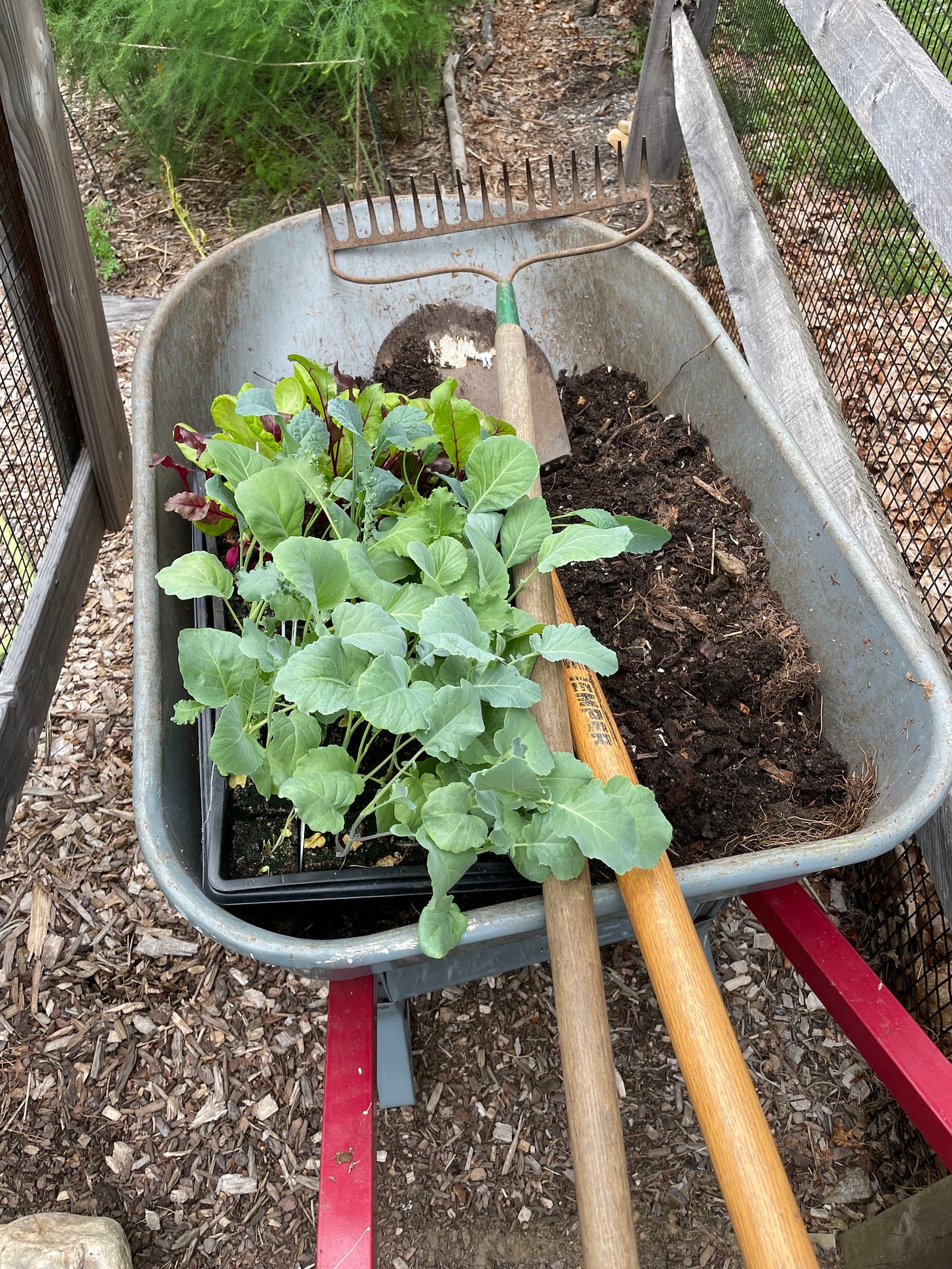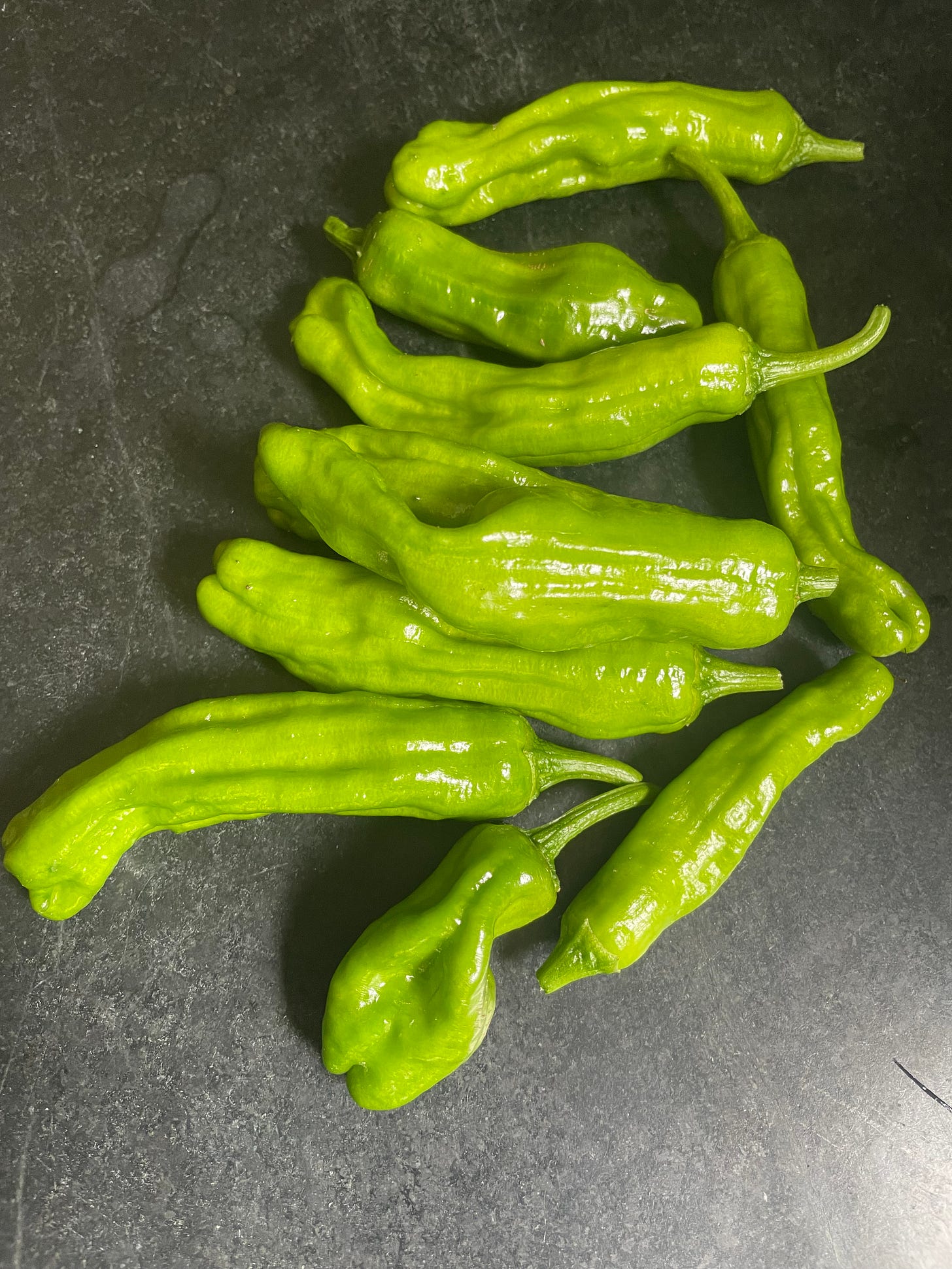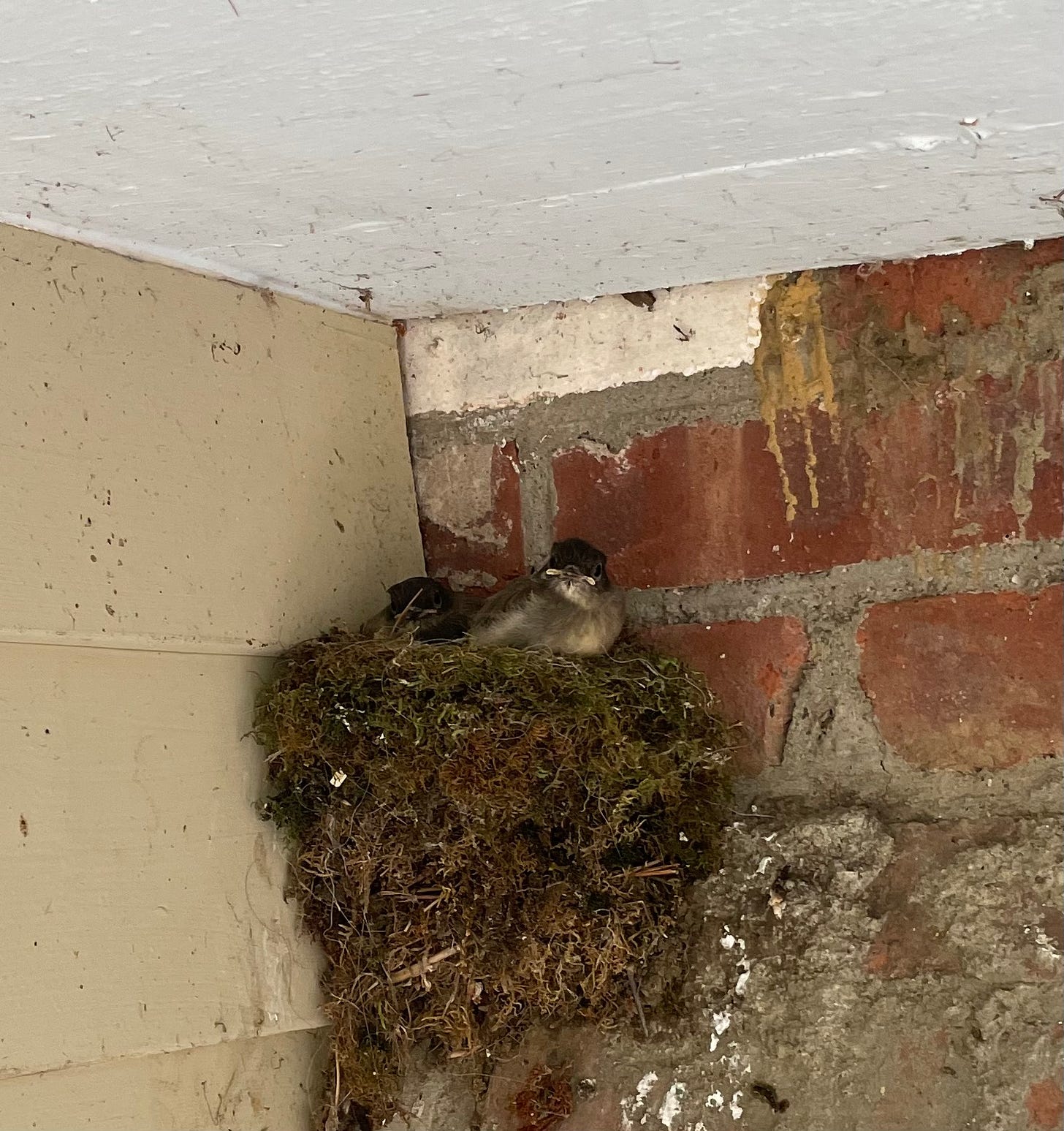What’s happening in the garden this week: July 14-20
Spreading compost and planting for fall before the summer harvest really begins
The heat wave finally broke late this week here in western Massachusetts and I hope where you’re living as well. A bit of fresher air and lower humidity sure helps make gardening seem more like a pleasant escape and less like a chore, doesn’t it?
Compost
I spread about an inch of compost on three beds where lettuce and broccoli had been growing. Incorporating compost is a vital step to maintaining the vitality of your vegetable beds: It adds nutrients, keeps down weeds and is a great way to help the soil retain moisture, which is so important during the hot summer months. I’ll add compost to the remaining five beds later in the summer and fall. I like to spread compost on each bed at least once each year, simply by layering it on top of the soil. There’s no need to dig it in or turn the soil over.
I’m getting the compost from bins I built last summer and have been filling with spent and pruned vegetables, weeds, coffee grounds and grass clippings along with chopped up leaves, wood ash, shredded paper and cardboard. This summer I even added sawdust donated by a neighbor. I have three 3x4 foot bins built out of wooden pallets, each with compost at a different stage of decomposition. The bin I’m using now was filled last fall and early this spring. We compost vegetable scraps from the kitchen as well but put that into enclosed plastic barrel composters to avoid attracting bears. When the compost inside breaks down, I add it to the wooden bins and turn it all over. Adding water when you add new ingredients is important, but I guard against too much water by placing plywood over the tops of the bins.
Fall plantings
With the compost down I’ve started to plant fall vegetables. It’s been a little strange planting for fall with the weather we’ve been having but you have to give fall vegetables the chance to get growing before the amount of sunlight the beds receive each day dwindles as fall approaches. I plant late in the afternoon – never in the midday sun – and water the plants well. I did stretch a shade cloth over one of the beds with new plantings for a few days to give the plantings some protection when the temperatures were really high and the sun was scorching.
I’ve planted different varieties of broccoli and kale, along with collards and cabbage. They joined the brussels sprouts I put in last month. Still to get into the garden are beets and fennel, savoy cabbage and, hopefully, more leeks if they ever fully germinate under the grow lights in the basement. They’ve been taking their time! I also have more lettuce started that I’ll continue to tuck into shady spots in the garden.
More bush beans
I planted another row of bush bean seeds. That makes six rows in all, each planted three weeks apart. In early June I planted two rows of Maxibel Haricot Vert, a French-style thin string bean, and one row of a yellow bean called Eureka. In late June I planted two rows of an old standby green bean called Provider, and this week I planted another row of the Haricot Vert. The beans planted in early June are flowering so they should start producing soon. A couple beds away, the pole bean vines are still winding their way up the trellis. I don’t expect to see much out of them until mid-August or so.
Other happenings
I’m growing Shishito peppers for the first time and the two plants are already producing. We’ll be enjoying them soon, flash sauteed with olive oil and salt. We’re eating yellow squash from one of the two squash plants. There’s a lot more squash to come, I’m confident to say, along with zucchini. I see lots of zucchini bread, muffins, brownies, pancakes, pizza, you name it, in the weeks ahead. The zucchini output is always overwhelming — I’m growing three plants this summer — but it’s one of the things that makes summer a joy. Speaking of summer joys, a few tomatoes are starting to ripen, enough to add to a salad or slice thinly on a sandwich. Tomatoes come a bit later in New England than they used to in the mid-Atlantic, but the wait is worth it.
Phoebes fledged
We had a happy ending to the saga of our Eastern Phoebes. Two chicks fledged this week and their parents have flown off into the trees, taking with them their incessant cry that can best be described as FEEE-BEEE! FEEE-BEEE! FEEE-BEEE! It’s been the soundtrack to our lives since April, greeting us outside our bedroom window each morning and accompanying our supper on the breezeway in the evening. The nest is intact so we can only assume (hope) this pair will be back with us once again next spring after their winter sojourn in Florida, the Gulf Coast or Mexico. In their honor we’ve decided to name or farm Phoebe Hill.
Previous updates:
What’s happening in the garden: July 7-13
What’s happening in the garden: June 30-July 6
What’s happening in the garden: June 23-30
What’s happening in the garden June 16-22
What’s happening in the garden: June 9-15
What’s happening in the garden: June 2-June 8
What’s happening in the garden: May 26-June 1







